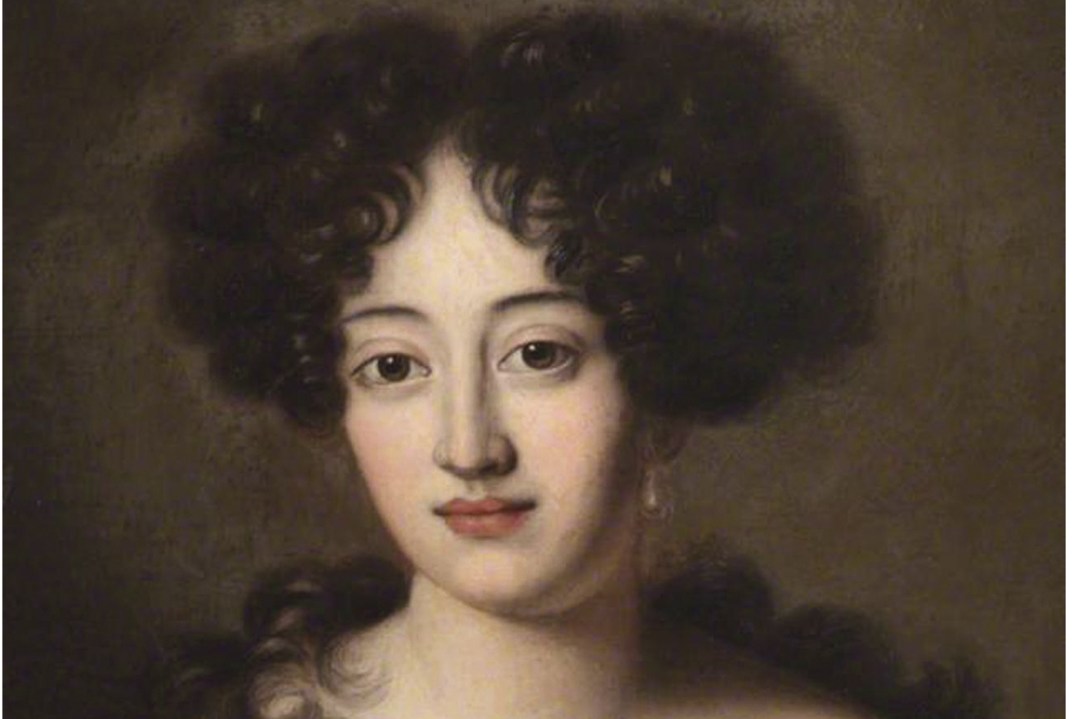Strolling through Whitehall Palace in the early years of the Restoration, Samuel Pepys was thrilled to spy a washing line displaying ‘the finest smocks and linen petticoats of my Lady Castlemaine’s… and did me good to look upon them’. The owner of the glamorous undergarments was Barbara Villiers, the first of the many maîtresses-en-titre of King Charles II who form the subject of this incisive new study.
Linda Porter’s eye for detail is no less acute (though certainly less creepy) than Pepys’s. In her hands the lives and characters of the women who shaped the reputation of the Restoration court emerge as far more discrete and individual than the identikit line-up of Lely beauties whose portraits are one of the most recognisable identifiers of the period. Despite Charles’s reputation as a ‘sleazy playboy’, the list of his conquests is comparatively short. Porter concentrates on his five principal lovers: Lucy Walter, Barbara Villiers, Louise de Kérouaille, Hortense Mancini and, of course, dear old Nelly Gwynn — as well as his Portuguese queen, Catherine of Braganza, and Frances Stuart, best known for being one of the few women who resisted Old Rowley’s charms.
The commonplace that Charles’s accession ushered in an age of debauchery after the strict rule of Oliver Cromwell’s protectorate is disputed, as puritan London apparently provided ‘a heady mix of secret assignations and love affairs’ among the art-loving Cromwellian elite. Barbara Villiers took advantage of this, as seen in the delicious detail of her writing to the Earl of Chesterfield from the bed she is sharing with a girlfriend, suggesting an appointment above a shop in the city — possibly ‘the earliest recorded invitation to a threesome in English history’, Porter notes.
Slander may have been a price worth paying for the material rewards of being Charles II’s mistress
Nonetheless, the optimism surrounding Charles’s restoration was soon marred by a careless licentiousness which exceeded the clandestine debaucheries of the Commonwealth. Womanising became an addiction, fed by Charles’s long years of idleness in exile; and where the king led, his courtiers notoriously followed. Porter’s use of primary sources illustrates the positively pornographic nature of public discourse, and demonstrates that viciously sexual language as a means of attacking women seen to be powerful is a habit not confined to the age of Twitter. Even a few lines attributed to George Villiers, Duke of Buckingham, about his cousin Barbara show the extraordinary level of obscenity that royal mistresses endured:
She was so exquisite a whore,That in the belly of her mother,Her c—t she placed so right beforeHer father f—d them both together…
While Porter is cautious about anachronism in portraying her subjects as relatably modern — it would be inaccurate, she warns, to interpret the troubled life of the defiantly unconventional Hortense Mancini as ‘empowered’ — she emphasises that despite the malice and contempt Charles’s lovers could expect to attract, their position was one of the few means by which they could attain wealth and independence. With the exception of Lucy Walter, whose son by Charles was born before he regained the throne, the ‘royal whores’ did very nicely out of their disgrace. Scurrilous pamphlets may have been a price worth paying for pensions, estates and titles for their children.
Charles’s legal wife enjoyed fewer compensations. Though she brought Charles the most generous marriage settlement ever received by an English monarch, including the ports of Tangier and Bombay, Catherine of Braganza was forced to endure years of humiliation over his philandering, her position made all the more bitter by her own inability to fulfil the primary purpose of queenship, a legitimate heir. The presence of Charles’s bouncing brood of bastards can only have added to her pain; but Porter’s portrait of the queen is more revealing than that of the ‘clueless ingenue’ depicted in many accounts. Her contribution to the arts, particularly music, is given full weight, as is her emergence as a capable ruler at the end of her life.
The legends of Charles’s sex exploits have eclipsed the politics of his reign, and it is one of Porter’s strengths that she takes the implications of the royal romping seriously. While she does not accept Kevin Sharpe’s theory that Charles practised a ‘politics of pleasure’, wilfully attempting an attack on conventional monarchical morality through his lifestyle, she assesses the connection between his anarchic sex life and the enigma of his character to interesting effect. Conditioned by the trauma of his impoverished, peripatetic youth, Charles as king was obsessed with secrecy, with a Hobbesian belief only in the self-interest of those who served him. He had seen majesty for the sham it was and had neither faith in, nor respect for, it. In the words of the Marquis of Halifax, Charles ‘lived with his ministers as he did with his mistresses — he used them, but he did not love them’. It is testament to Porter’s skill as a historian that by the end of Mistresses the darkness at the heart of the brilliant Restoration court is so bleakly exposed.







Comments